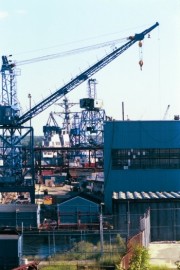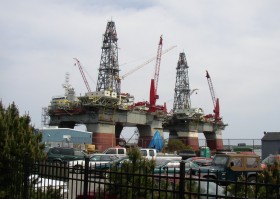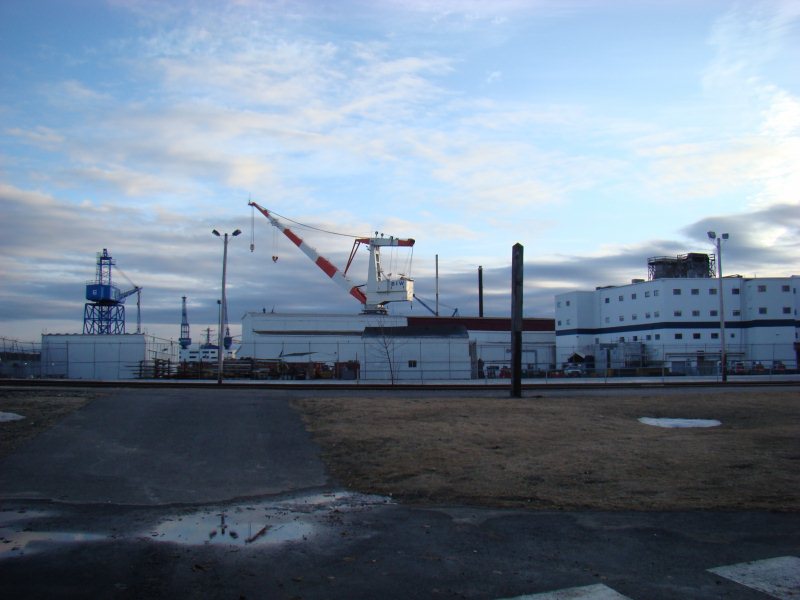Shipbuilding has been a way of life along the Kennebec River in Bath since 1743 when Jonathan Philbrick launched a schooner with the help of his two sons. Smaller fishing and sailing craft had been built for years, but a new industry was now emerging.
In 1762 the Earl of Bute, the first full-rigged ship built under contract, was launched on the site of present day Bath. In the 19th century, Bath became one of the leading ports in the United States competing with New York, Boston, Philadelphia and Baltimore in the tonnage of vessels registered here.
By the 1840’s Bath Iron Works began producing the finest steel hulled ships in the world. As war with Spain loomed, the shipyard, according to Hazard, “won valuable contracts from the U.S. government in 1897 and 1898 to repair two American warships and build five torpedo boats, two gunboats, a cargo steamer, and a training vessel for the Naval Academy at Annapolis.”
Shortly after a fire destroyed the steam vessel Katahdin in 1913 on Moosehead Lake, the Iron Works was contracted to build the second Katahdin, which is still in use today.
In what eventually amounted to over $2 million in contracts and a 1,000 man payroll of over $360,000, BIW became a profitable major company and the Bath area enjoyed sustained prosperity.
The year 1890 saw BIW winning contracts for two steel hulled gunboats, initiating a fruitful relationship between BIW and the U.S. Navy which continues to this day. Over the last century, BIW has provided battleships, frigates, cruisers, and destroyers for the Navy while also building yachts, fishing trawlers and a host of commercial vessels. Today, BIW, the largest private employer in the Maine, builds AEGIS Destroyers – said to be the most advanced and capable warships in the world. BIW operates with highly skilled union labor, unusual in a state in which organized labor is not strong.
Timeline
1833 Bath Iron Foundry established on the Kennebec River
1865 General Thomas W. Hyde, Civil War hero, buys Bath Iron Foundry
1882 Goss Marine Iron Works is founded nearby
1884 General Hyde renames Bath Iron Foundry as Bath Iron Works and incorporates company
1888 New England Shipbuilding Company, with General Hyde as an investor, acquires Goss Marine Iron Works
1888 BIW acquires New England Shipbuilding Company
1890 Steamer Cottage City is the first BIW-built hull
1893 USS Machias, a gunboat, is the first BIW-built U.S. Navy ship
1894 City Of Lowell is the first BIW-built commercial steel vessel
1901 BIW is acquired by United States Shipbuilding Trust
1905 John S. Hyde, eldest son of General Hyde, purchases BIW
1906 USS Georgia, the first and only BIW-built battleship, is delivered
1917 BIW is sold to Maine investors upon the death of John Hyde
1925 BIW is sold at a public auction, operations are idled
1927 BIW is leased by William S. “Pete” Newell and a group of investors, company is incorporated again
1940 Second BIW facility, the Hardings plant, is built in East Brunswick
1940-1945 82 destroyers are built during WWII, totaling more than in the entire Japanese Empire
1955 First of a new class of destroyers, USS Forest Sherman, delivered
1967 Bath Industries, Inc. is established as a holding company for BIW, Pennsylvania Crusher and the Hyde Windlass Co.
1968 Bath Industries, Inc. acquires Congoleum-Nairn, a manufacturer of home furnishings
1975 Bath Industries, Inc. changes its name to Congoleum Corporation
1977 Lead ship of a new Navy class of guided missile frigates, USS Oliver Hazard Perry, is delivered
1983 Floating dry dock opened in Portland
1984 Tanker Falcon Champion, is the last BIW-built commercial ship delivered
1985 Strike by 4,500 employees, from July 1st to October 8th, is the longest in the company’s history
1986 BIW acquired by Prudential Insurance
1987 Last Oliver Hazard Perry class ship, USS Kauffman, is delivered
1987 First BIW-built, guided missile “AEGIS” cruiser, USS Thomas Gates, is delivered
1991 The lead ship of a new Navy class of guided missile “AEGIS” destroyers, USS Arleigh Burke, is delivered
1993 Last BIW-built AEGIS cruiser, USS Lake Erie, is delivered
1995 BIW becomes a wholly-owned subsidiary of General Dynamics
1996 Awarded contract under an Avondale Shipyard-led alliance to build four Navy dock landing ships, the San Antonio-class (LPD 17)
1999 Designated as the Blue Team in a shipbuilding alliance with Ingalls Shipbuilding to competitively design the DD-21 land attack destroyer.
2001 BIW launches Mason (DDG 87). It is the last ship to slide down the inclined ways.
2002 BIW christens Chafee (DDG 90) – first ship constructed on Land Level transfer Facility.
2003 BIW subcontract for DD(X) Phse III program
2006 Sampson (DDG 102) is first vessel christened on Land Level, prior to translation to dry dock
2007 BIW awarded $250 million to complete class detail design of Zumwalt (DDG 1000) class destroyers (formerly DDX)
2008 BIW opens Ultrahall, a huge new climate controlled facility on the LLTF, capable of handling ship sections the size of the full girth of the Zumwalt hulls. Units weighing as much as 5,000 tons can be assembled in this giant building.
2009 Full scale production of sections of the first DDG 1000 begins at the Harding plant in Brunswick.
2020 BIW workers union reject the company’s contract “final offer” and go on strike for 63 days until an agreement with the company was reached.
Additional resources
http://www.biw.com/ – timeline and official history is produced and copyrighted by BIW. (accessed November 14, 2010)
Bath Iron Works. Bath Iron Works Corporation: Condensed History. Bath, Me. Bath Iron Works. 1975.
Hazard, Elizabeth. “The Maine Remembered: Responses to the Spanish-American War in the Pine Tree State,” Maine History, Spring, 1998.
Eskew, Garnett Laidlaw. Cradle of Ships. New York. Putnam. c1958
Sanders, Michael S. The Yard : Building A Destroyer At The Bath Iron Works. New York : HarperCollins Publishers, c1999.
Snow, Ralph Linwood. Bath Iron Works: The First Hundred Years. Bath, Me. Maine Maritime Museum, 1987







